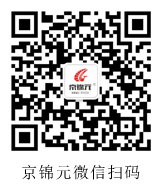By Jim Johnson
SENIOR STAFF REPORTER
Published: October 15, 2014 9:18 am ET
Updated: October 15, 2014 9:25 am ET
Post-consumer plastic bottle recycling tonnage increased by another 4.3 percent last year, continuing what is now a growth spurt that’s lasted more than two decades.
That kid from “Jerry Maguire” was born in 1990, Madonna had a hit with “Vogue” and folks started surveying plastic bottle recycling that same year.
The kid who knew how much a human head weighed — 8 pounds — is long grown. And Madonna is, well, no longer in vogue.
But new statistics show that plastic bottle recycling, once again, has increased. That’s every single year since they started crunching numbers.
Plastic bottle recycling grew by 120 million pounds last year to exceed 2.9 billion pounds, according to the Association of Postconsumer Plastic Recyclers and the American Chemistry Council.
While the total pounds of plastic bottles increased by 4.3 percent last year, the overall plastic bottle recycling rate increased 0.4 percent to 30.9 percent last year.
“America’s plastics recycling industry is growing, vibrant and poised to help brand owners, retailers, and packagers meet their sustainability goals with high quality recycled plastics,” said Steve Alexander, APR executive director, in a statement.
“The data are in and they clearly show that U.S. reclaimers are able to compete internationally to provide the recycled plastics that our customers demand,” he said.
Single-stream recycling continues to push more and more plastic through the reclamation system, but there is a cost to all that curbside efficiency.
Contamination, caused by intermingling recyclables, continues to be an issue.
More and more companies are turning toward plastic bottles for packaging, but that use is being offset to some degree by the trend toward lightweighting containers and using concentrated formulas that require smaller bottles, the new survey reveals.
And while more people are rolling their recycling carts to the curb, a lack of away-from-home recycling options continues to be a challenge, the groups said.
HDPE bottle recycling — think milk jugs and detergent bottles — increased by 26 million pounds to 1.05 billion pounds last year and held steady with a recycling rate of 31.6 percent, according to the new figures.
PP bottle recycling, meanwhile skyrocketed by 32 percent from 2012 to 2013, to 62 million pounds.
This full report on plastic bottle recycling follows the recent release of the PET bottle recycling results by the APR and the National Association for PET Container Resources that showed an 80-million-pound increase in 2013.
PET bottles accounted for nearly 1.8 billion pounds of the 2.9-billion-pound recycling total.
PET and HDPE make up more than 96 percent of the U.S. plastic bottle market. PP is another 2 percent of the remaining 4 percent.
PET and HDPE also represent 97.8 percent of all bottles recycled, and PP checks in at 2.1 percent of the bottles recycled, the report indicates.
“Although bottles made with the #3 through #7 resins are recyclable, and to varying degrees are recycled, the actual level of recycling is limited by the continuing challenge to reach a critical mass of readily recognizable bottles for economical collection and processing,” the report states.
The increase in 2013 compares with a 6.2-percent, 161-million-pound jump in 2012 that APR and ACC reported last year.
The new report is available at: http://plastics.americanchemistry.com/Education-Resources/Publications/2013-National-Post-Consumer-Plastics-Bottle-Recycling-Report.pdf
| 